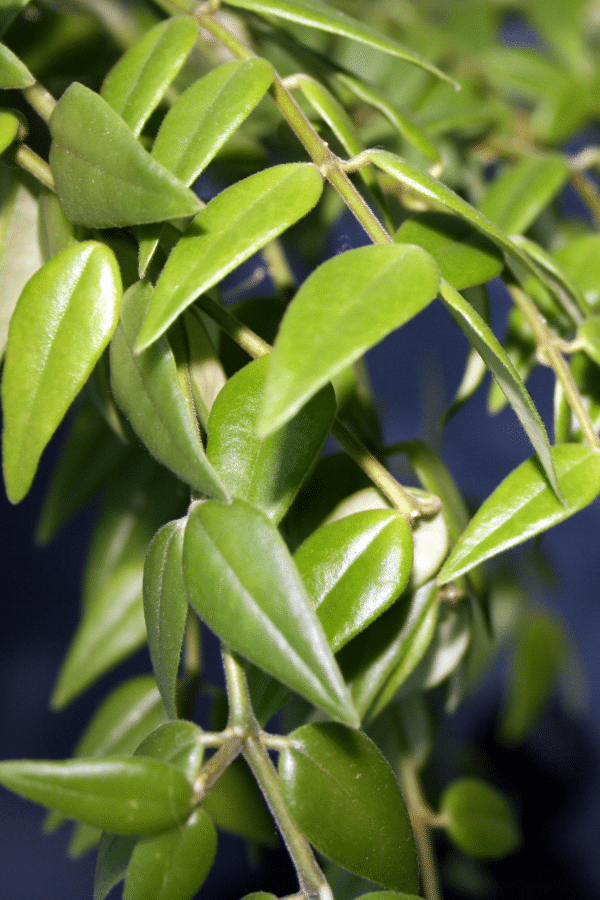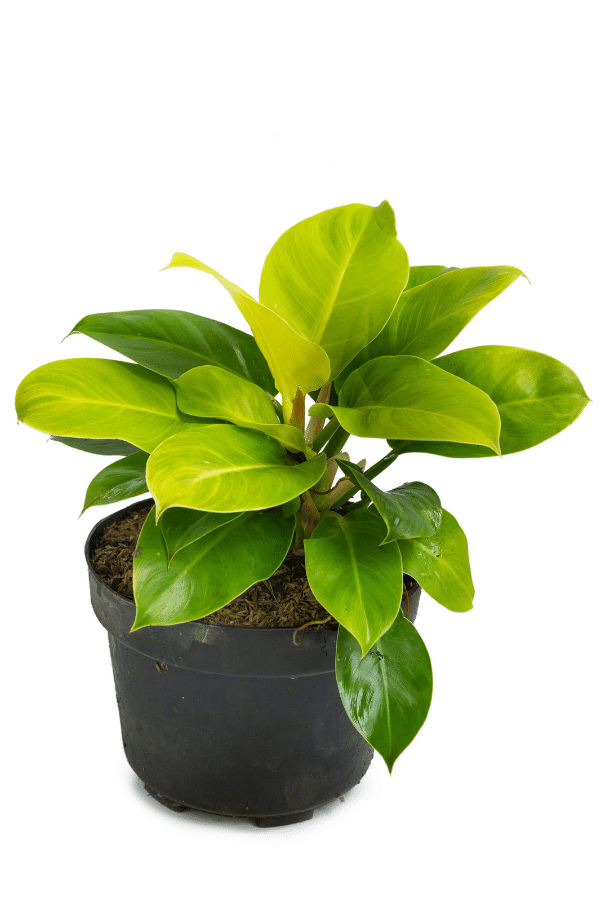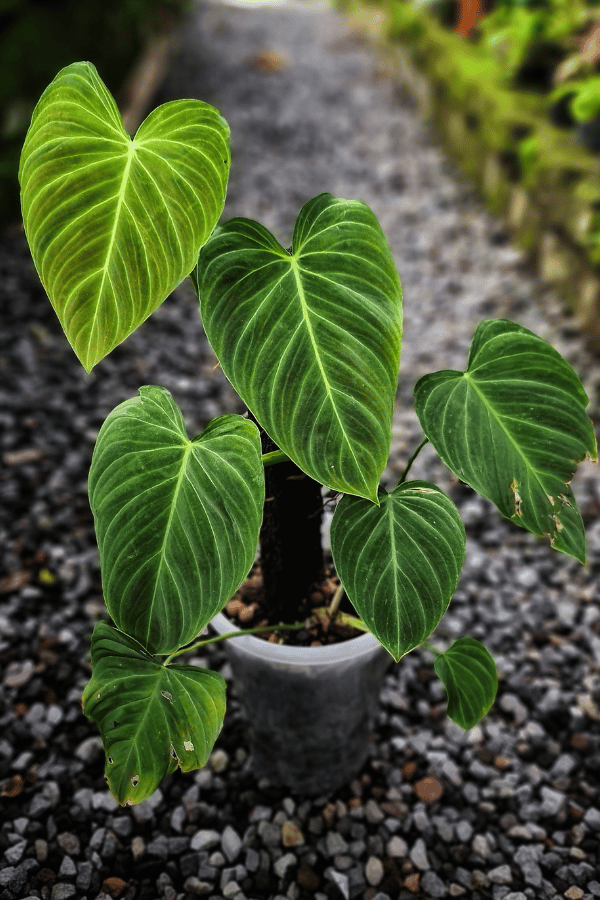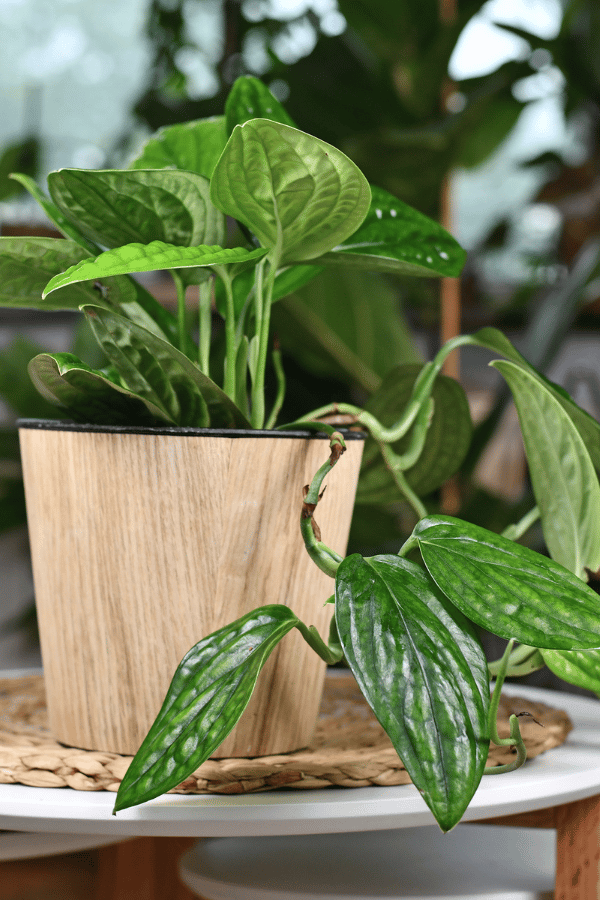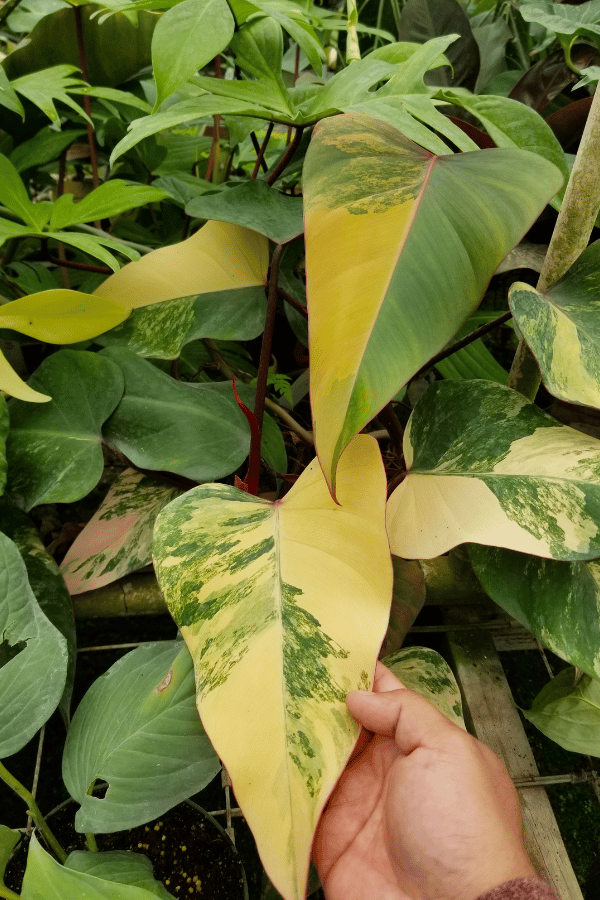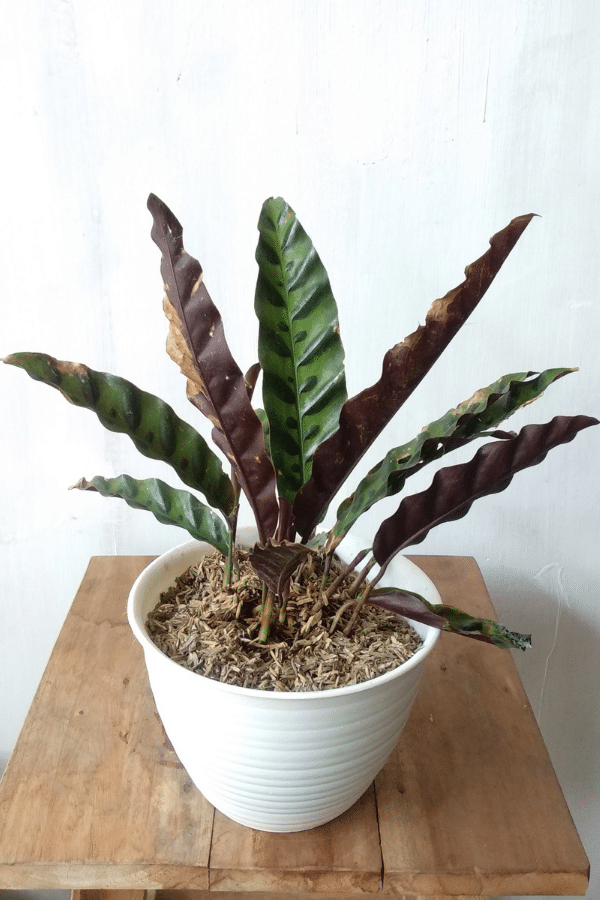Piper Ornatum
Scientific Name: Piper Ornatum
Piper Ornatum care is difficult and is not a good plant for beginners, however, if you have successfully grown some houseplants, you may be able to grow this plant well. This plant will give you a unique and colorful foliage pattern and loves to cascade in a hanging basket.
To give this Piper Ornatum plant the best care, it requires airy soil that has good drainage, allow the soil to dry out on top before watering, provide it with bright indirect sunlight, temperatures ranging from 65-80F, and above-average humidity levels.
Quick Care Overview
| Common Name | Celebes Pepper |
| Scientific Name | Piper Ornatum |
| Family | Piperaceae |
| Origin | Indonesia |
| Growth Rate | Medium |
| Identification | Sprawling shrub with heart-shaped leaves that are red, pink, green, and silver |
| Height | Up to 15 feet in length |
| Soil | Airy soil that has good drainage |
| Water | Allow top few inches of soil to dry out before watering |
| Temperature | 65-80F |
| Sunlight | Bright indirect sunlight |
| Toxic to Cats & Dogs | N/A |
| Toxic to Humans | N/A |
| Pests | Mealybugs, thrips, aphids |
| Diseases | Root rot |
Below we will dive deep into this Piper Ornatum care guide.
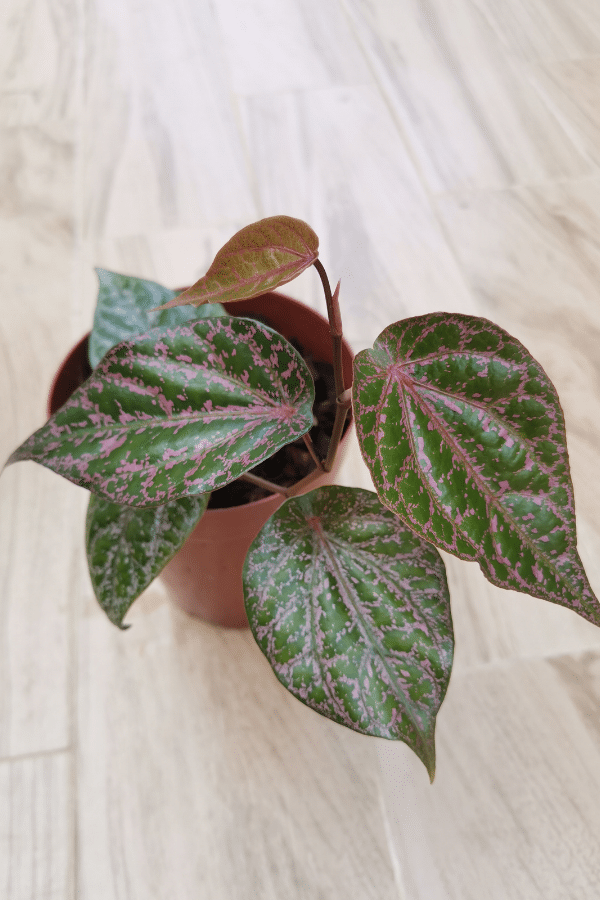
Piper Ornatum History
Indonesian native, Piper Ornatum, also known as the Celebes Pepper, is a lovely glossy mottled leafed vining plant with gorgeous purple and red-hued undersides with pink and green leaves. Being sought by many plant collectors, this popular plant is a magnificent silver-flecked beauty.
Piper Ornatum Identification
Piper Ornatum may be classified as a sprawling shrub that has foliage exquisite patterns. Heart-shaped leaves are mottled in patterns of red, pink, green, and silver. Leaves appear almost iridescent.
Piper Ornatum Growth Facts
Piper Ornatum has a sprawling, low-growth habit. It does well when grown in hanging baskets, or when allowed to climb as moss pole. This plant is also well suited for terrariums, due to its love of humidity.
How Big Does a Piper Ornatum Get?
Piper Ornatum may trail up to 15 feet long and will grow to become around 2 feet wide.
Piper Ornatum Care
Piper Ornatum is considered difficult to care for as it requires very high humidity levels to keep happy. This plant is not considered to be a good choice for beginners but is sought after by avid plant collectors due to its beauty. If you give Piper Ornatum the care it requires, you will be rewarded by an abundance or gorgeous, colorful foliage.
Piper Ornatum Soil
Piper Ornatum requires a light, airy soil that has excellent drainage. A mix of peat moss or coco coir with incorporations of perlite will work well for this plant.
Piper Ornatum Fertilizer
Piper Ornatum will enjoy receiving a monthly feeding during the warm growing season from a diluted balanced liquid fertilizer. You should dilute your fertilizer by about half. Do not feed your Piper Ornatum during the winter.
Piper Ornatum Watering
Piper Ornatum is sensitive to overwatering. You should rewater your Piper Ornatum when the top 2″ of soil has dried out. If you see your plant’s foliage turn yellow, it is often indicative that the plant is being overwatered. Alternatively, if you see that the foliage of your Piper Ornatum is turning brown, you are likely needing to water your Piper Ornatum more.
Piper Ornatum Light Requirements
Piper Ornatum will enjoy being kept in bright, indirect light, such as from a southern facing window. Although this plant may tolerate lower light conditions, low light will cause the leaves to become gaped and growth to slow down. Alternatively, too much direct sunlight will lead to foliage scorching.
Piper Ornatum Temperature & Humidity
Piper Ornatum, being a tropical plant, likes to be kept in warm, humid environments. Ideal temperatures will range from 65-80F but be sure to not let the temps dip below 60F or else it could die from getting too cold. In fact, this plant requires humidity levels to be quite above average household level to remain happy. Increase humidity levels in your home by installing a humidifier or pebble tray. Alternatively, you may choose to grow your Piper Ornatum in a bathroom, as long as it has sufficient lighting.
Repotting Piper Ornatum
You should repot your Piper Ornatum whenever you see roots poking through its container holes. Repotting should be done in the spring or summer during active growth. Select a container that is 1-2 inches larger than the previous container. Repot your plant, being careful not to disturb the roots. Refresh the soil, tamp lightly, water thoroughly, and place in indirect light.
Piper Ornatum Maintenance & Pruning
Piper Ornatum will naturally trail, so this plant would love a moss pole for it to climb. You can prune the plant back, if you want to achieve a fuller bushier look rather than a long trailing look. Rotate this plant 1/4 around every time you water it for even growth. This plant will also get dusty, so wipe the leaves down often.
Piper Ornatum Propagation
Propagating this plant is easy by stem cuttings. They can be planted directly in soil or placed into a jar of water.
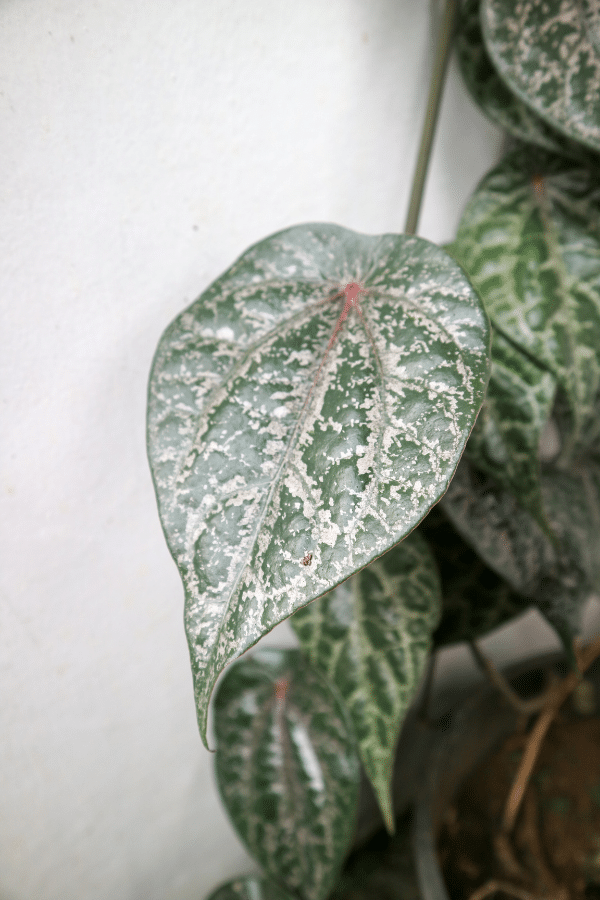
Piper Ornatum Toxicity
Toxicity to Humans
Although Piper Ornatum has been used historically as a folk medicine in India to treat many different ailments, you should not consume Piper Ornatum without contacting a medical practitioner.
Toxicity to Cats & Dogs
While Piper Ornatum is not known to be toxic to pets, you should avoid allowing your pet to ingest this plant, as it may cause digestive issues such as vomiting or nausea.
Piper Ornatum Problems
Piper Ornatum Leaves Turning Yellow
The foliage of your Piper Ornatum may turn yellow due to it receiving too much sunlight or too little. Alternatively, leaves may turn yellow due to overwatering or the natural aging process.
Piper Ornatum Leaves Turning Brown
When the foliage of your Piper Ornatum turns brown, it often indicates that your plant is not receiving enough water.
Piper Ornatum Diseases
As Piper Ornatum is a tropical plant that enjoys being kept in extremely humid environments, it may become susceptible to fungal and bacterial diseases related to overwatering and warm, humid conditions. Upon identifying plant infection, isolate your plant, and treat it with a fungicide. Ensure that you follow all label instructions.
Piper Ornatum Pests
Like many other indoor tropical plants, Piper Ornatum may become susceptible to infestation from indoor houseplant pests such as mealybugs, aphids, thrips, and more. Upon identifying a pest infestation, isolate your plant, and treat with a pesticide such as neem oil or insecticidal soap. Ensure that you follow all label instructions.

